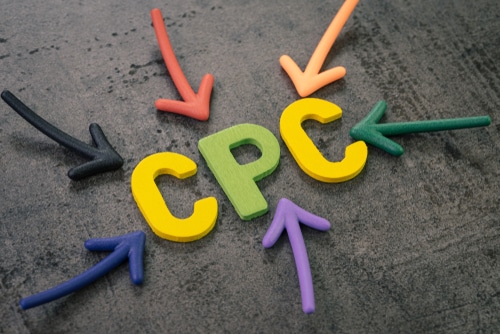Performance advertisers in 2025 are using data and audience insights to reach prospects and drive conversions faster. Although creative work hasn’t always been seen through a data-driven lens — with marketing creative often designed or chosen on gut instinct or personal preference — all the data now available to performance marketers and advertisers means it’s time to bring the rigor and opportunity of data-driven best practices to creative work.
Because using engaging, high-quality creative ads in this busy web landscape can make or break you in finding and qualifying high-intent users, as well as in converting those users into sales, it’s vital to follow these creative best practices for success.
5 Best Creative Practices for Performance Advertisers to Know in 2025
As a performance marketer developing a campaign or program, you’ve likely done a lot of planning. You’ve done the research, you’ve determined audience targeting and segmentation, and you’ve probably already spent too much time trying to tweak social or search ads for better results. You know your goals and KPIs, and you’ve researched the latest digital advertising trends. Incorporating creative best practices into your performance marketing program shouldn’t be an afterthought.
The creative work of performance advertising should be built into your planning up front, along with all these other components. The creative is more than just images — it’s everything from the copy and CTA buttons to colors, logos, videos, GIFs, and more. These are a few broadly applicable common best practices for creative to follow as you’re finding, qualifying, and converting your target audience:
- A/B test everything: Test colors, test images, test fonts, and test any other elements that can be changed within an image, video, or interactive asset.
- Go beyond native ads: These ads have been useful for years now, but times are changing. As users become fatigued and search and social channels show diminishing returns, consider other options to find your target users.
- Know the specs: Web users will notice a badly cropped or low-quality image, or a slow-to-load video, and dismiss them quickly. Make sure you’re using the right aspect ratio, resolution, or media type for the format or platform.
Beyond these general best practices, here’s how to effectively incorporate creative efforts into your performance marketing campaigns.
1. Choose Images Wisely
There’s both art and science involved in choosing images for your performance marketing campaigns. For example, including people in photos usually attracts more attention — specifically, photos of hands holding or pointing toward products tend to perform well. Consider what emotion the photo should be expressing, and include images that mirror your target audience members. Humanizing your product and brand can also work well for hero images on landing pages. You can include photos of users or experts, or use a powerful contextual image.
Visuals generally work best when they’re authentic and unpolished, with a clear focal point. Overly styled or complicated visuals don’t appeal to users quickly and directly. For display ads, focus on visual simplicity, without clutter, following the rule of laying out the image, then the text, then the logo, to help a reader quickly skim the ad.
2. Use Rigor in Branding
You might be running huge numbers of ads, landing pages, and more, but the work of branding has to be on point in every instance to make it effective. Make sure that ad visuals like colors, fonts, and images are consistently aligned with your company’s brand identity. This work pays off in the long run as you build recognition and trust with your desired audience — plus, it makes ads look more professional across the board.
Branding can be incorporated into any type of ad format or channel. When using rich media, make sure your overall visual identity is included as it would be in a native ad. In videos, put your company logo in the upper left corner and incorporate branding throughout the video as well. Choose colors carefully to be eye-catching but also harmonious with any recognizable brand colors.
3. Craft the Right Copy
It’s easy to only focus on one element when you’re building creative ads: Sometimes the image is an afterthought, and other times, the copy is an afterthought. But, they have to work together to engage a user and spur them to action. Keep your copy as short and jargon-free as possible to speak authentically to your prospects, and focus on the value proposition whenever you’re speaking to users. This is especially key for display and rich media, so that users understand the benefits of your product or service and click through for more.
Based on the audience research you’ve done, tailor copy to speak directly to your prospects and their interests, demographics, traits, or other details you have in hand. A tip: Web users tend to respond well to numbered lists, while a timeliness component (e.g., a limited-time deal) adds an enticement to learn more.
Download Taboola's Creative Best Practices for 2025 Playbook
4. Include Movement Appropriately
Today’s internet is a constantly moving landscape, with pop-up videos, subtly moving ads, and animation all showing up as part of the user experience. Once your prospects have found your ad or site, movement can spur them towards conversion, but use it carefully: Think about adding animation or transitions with subtle motion that encourages interaction, so the ad doesn’t feel intrusive or spammy.
Video is also an intrinsic part of performance marketing. Follow best practices for making video actionable, including keeping them short (under 15 seconds) and focused on the message at hand. CTA buttons are also important in videos. Put your CTA in the lower right corner to spur user interaction, and time it so it shows up shortly after the video starts.
5. Experiment With Ways to Engage Users
The ultimate goal of creative work for performance advertising is to move a user toward conversion — a subscription, purchase, or whatever it may be for your business. Users are busy, with ever-shortening attention spans, so engaging them in unique ways can help you succeed.
There are more ways to educate, entertain, and engage readers than ever before. You may try storytelling in formats like carousels, where you can build a narrative and anticipation with each slide. Within rich media, there are interesting, dynamic formats to try, as well as interactive, visually appealing product demos or other storytelling options. To urge users to interact, you can incorporate swipe and hover gestures, not just clicks.
The test of whether you’ve engaged a reader is ultimately click-throughs, so try out different CTAs. Consider integrating the three different types: CTA buttons on the upper right corner and bottom of the page or ad; textual hyperlinks within body copy; and gamified CTAs that use less typical phrases and add an element of fun to move the user toward conversion.
Key Takeaways
With search and social channels showing diminishing returns, it’s time for businesses to stand out by creating, publishing, and continually testing top-notch creative work. While the impact of creative work can seem like a guessing game, it’s completely possible to add rigor to designing, publishing, and testing all parts of creative — like the colors of the CTA button or whether the headline is capitalized — to see what engages your audience. Change and test one element at a time to narrow in on what’s working.
Experimenting and testing creative as you build campaigns will lead to more and more refinement of what you know about your audience and what they respond to across formats — landing pages, rich media, display ads, videos, carousels, and more. What combination of images and words leads to clicks and conversion? Test, learn, and repeat to get to the right combination for your audience and business.
Frequently Asked Questions (FAQs)
What are examples of creative best practices?
Creative best practices are essentially about best serving your audience, and can result in more high-quality leads and conversions. These include choosing the right image or video for each platform, and considering the audience and how to attract them with a glance. Creative best practices also mean keeping copy simple, with a single ask of the user, alongside that image, video, or rich media or display ad. Creative best practices reflect the essence of “creative”: Taking risks, trying new things within the format’s constraints, seeing what resonates, and tailoring accordingly.
What best practices should you follow when making creative?
When making creative, these best practices are essential to get right. Make sure your message is direct and clear, with one desired action for users to take. Tell a story with your advertising and create connections with users, showing that you understand their challenges. Use professional visuals that are tailored to your audience. And always test, learn from those tests, then iterate accordingly.
What are the best practices for TikTok ad creative?
TikTok ad creative performs best when it’s made specifically for the platform. So, use an authentic, not overly polished style, include sound, orient vertically, and film at least at 720-pixel resolution. Other TikTok creative best practices include featuring people and plugging into current trending topics and memes for relevance.



